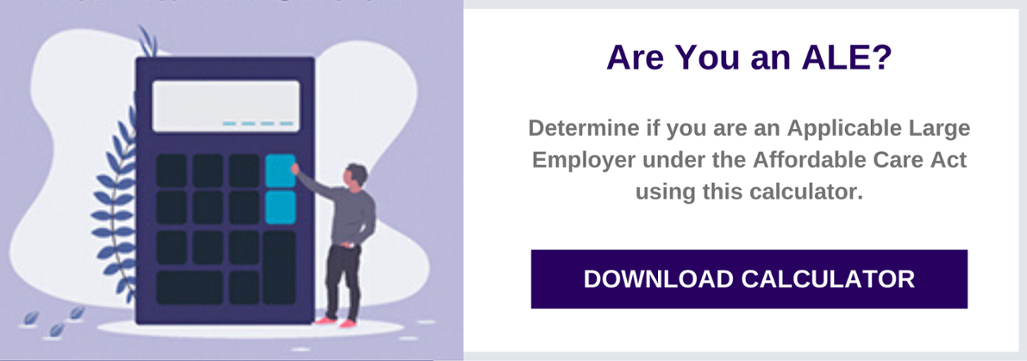
Written by
Aidan Farrish
Aidan is an aPHR-certified writer on the marketing team at BerniePortal. She writes about HR, healthcare, and benefits.
2023 ACA Compliance Updates: What You Need to Know

Keeping current on Affordable Care Act (ACA) compliance can be tricky—increasing penalties raise the stakes even higher for employers. In 2023, HR pros can expect lower affordability thresholds, which means increased attention to affordability safe harbors and rising ESRP penalties.
Another significant change will come into effect on December 12, 2022, as the federal government fixes the “family glitch,” an issue in the original language of the ACA that left some lower-income families struggling to afford healthcare costs.
These revisions affect both self-only and dependent coverage—read on to learn about these major changes and how to remain ACA compliant in 2023.
Self-Only Coverage: What Is Important to Know?
Lower Affordability Thresholds Changes
In 2022, the affordability threshold was 9.61%, meaning the employee’s required contribution for self-only coverage didn’t cost more than 9.61% of the employee’s household income. That percentage is decreasing in 2023 to 9.12%. This means your employee’s contribution to your healthcare plan must be less than 9.12% of your employee’s household income.
This change applies to employee-sponsored, self-only coverage. Employers must comply with the lower threshold to ensure they don’t trigger shared responsibility penalties.
Affordability Safe Harbors
Since the ACA affordability rule is based on household income, employers have to use techniques like safe harbors to figure out if employees fall within the set affordability standard. Safe harbors are useful for organizations when they don’t know employees’ household incomes. While the ACA and the IRS don’t require the use of them, safe harbors work to protect your organization from potential employer-shared responsibility penalties. There are three safe harbors you can use:
The W-2 safe harbor is the most difficult of the three as this method is based on what an employee reports in Box 1 of their W-2, where they self-report taxable income for the year, including wages, tips, and other compensation.
The rate of pay safe harbor is based on the employer's rate of pay from the start of the coverage period; changes are allowed for hourly employees only if the rate of pay decreased during the same period.
The federal poverty line safe harbor is based on if a single individual makes monthly contributions not exceeding 9.5% of the federal poverty line.
While nothing this year has changed, keep note of all the details these safe harbors require you to know. For example, the federal poverty line table updates annually but isn’t released until after the year starts, so employers can use the table published within six months prior to the plan year.
Check out these detailed examples of how to use these affordability safe harbors. These examples are from 2022, so be sure to adjust the 9.61% figure to 9.12% for accuracy.
Rising ESRP Penalties
Employer-shared responsibility payments (ESRP) are tax payments made when applicable large employers (ALE) offer less than minimum coverage. An ALE is an organization that has 50 or more full-time employees or 50 equivalents (FTE). FTEs are important to note, because your organization may need to tally hours and determine workloads to remain ACA compliant.
ESRP penalties continue to rise each year, so it is vital to update yourself on compliance to avoid paying severe fines. The IRS levies penalties against ALEs that fail to offer coverage to at least 95% of their full-time employees (the “A” penalty) or those that offer plans that are unaffordable or do not meet the minimum value standard (the “B” penalty). For 2023, the “A” penalty fine is $2,880, or $240 monthly. The “B” penalty is $4,320, or $360 monthly.
The IRS only needs to find out about one uninsured employee to leverage a fine against your organization. Suppose someone is without offered coverage (the “A” penalty) and requests a premium tax credit (PTC) to gain coverage. The ACA health exchange grants the PTC but then notifies the IRS. The IRS cross-references the 1095-C filings for the applicable year and identifies how many people the organization employees to calculate a fine.
Minus the standard 30-person exemption, if your organization employs 350 people, the IRS calculates it like this:
2,880 x (350-30) = $921,600 in fines your organization must pay
To avoid expensive fines, stay up to date on changing penalty amounts for both “A” and “B” penalties. Read more on IRS details on fines and compliance.
Dependent Coverage: The “Family Glitch” Fix
For employees under employer-sponsored self-only coverage, the so-called “family glitch” prevented employees’ dependents from using ACA marketplace subsidies, like PTCs. This is because the IRS determined affordability thresholds for individual employees, not for family coverage.
Families were either left without health insurance or had to choose plans that were prohibitively expensive—one study estimates that these families spend 16% or more of their household income on health insurance. Household income will now decide access to subsidies after December 12, 2022.
But who does the “family glitch” affect? The answer is primarily lower-income households, but small firms should stay informed as it could affect their employees and employees’ dependents.
Keeping up with all of these details is challenging. An all-in-one HRIS like BerniePortal can help you distribute ACA forms such as the 1095-C and remain compliant with the new ACA changes. As open enrollment kicks off and filing deadlines draw closer, it is more important than ever for HR pros to stay informed on ACA compliance updates in 2023.
Additional Resources
You can stay informed, educated, and up-to-date with important HR topics using BerniePortal’s comprehensive resources:
- BerniePortal Blog—a one-stop-shop for HR industry news
- HR Glossary—featuring the most common HR terms, acronyms, and compliance
- HR Guides—essential pillars, covering an extensive list of comprehensive HR topics
- BernieU—free online HR courses, approved for SHRM and HRCI recertification credit
- HR Party of One—our popular YouTube series and podcast, covering emerging HR trends and enduring HR topics

Written by
Aidan Farrish
Aidan is an aPHR-certified writer on the marketing team at BerniePortal. She writes about HR, healthcare, and benefits.
Related Posts
Each year, new state and local regulations take effect, and with a new administration...
As we approach 2025, it's essential for HR professionals to plan for the upcoming year's...
From major holidays to key compliance and ACA deadlines, here’s everything you need to...








Submit a Comment